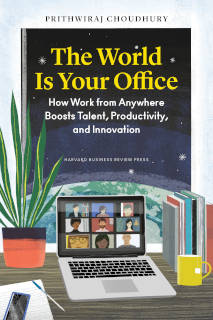[From Unsplash]
As more people become able to work from anywhere, the question of where employees want to work and live becomes increasingly important. While some workers have clear preferences, for instance wanting to move close to existing friends and family or to more affordable locations, many have other priorities, like wanting to live near a beach, or near restaurants and museums, or just somewhere with temperate weather.
Some, known as digital nomads, even move from one place to another, spending weeks or months in one place before moving on to the next, all while still working full-time, completely remote jobs. For these flexible workers, a whole host of locations become potential places to call home. And in response, locations hoping to attract these remote workers—and their tax dollars and local spending—have begun offering incentives for them to move to their town, region, or even country.
Within the United States, this phenomenon has taken the form of a slew of cities and states creating programs to bring remote workers to their areas. In Northwest Arkansas, the region highlights its outdoor activities and offers a mountain bike for newcomers, along with cash incentives. Topeka, Kansas, offers up to $15,000 in housing assistance for qualified remote workers. And West Virginia offers wraparound services including housing cost reimbursements, access to coworking spaces, and funding for professional development.
The idea of bringing in remote talent with a combination of cash incentives and connecting them to the local community through social programming was pioneered in Tulsa, Oklahoma, by the Tulsa Remote program, which launched in 2018 with a class of one hundred remote workers. The goal was to attract community-minded workers who would become engaged city residents, and hopefully stay long after the one-year program requirement. Program participants ended up volunteering at the local high schools, serving on local boards, and even opening new businesses. By one measure, the Tulsa Remote program generated nearly $14 of increased economic activity for every $1 it spent on incentives for participants. For local governments hoping to boost their economies, this financial benefit is a clear argument in favor of attracting more remote workers.
Globally, since 2019, forty countries and territories have rolled out their own incentive programs aiming to attract digital nomads. Places as diverse as the Seychelles, Portugal, Brazil, the UAE, Costa Rica, and Estonia now offer digital nomad visas that allow for temporary residence. Each country’s program is slightly different, but broadly speaking, the visas span from three months to one year and exempt the workers from local taxes in exchange for a one-time fee. Some places, like Portugal, even allow digital nomads to eventually transform these short-stay visas into permanent residence after a certain period of time. All of the programs require that the visa holder provide proof of employment in a remote workplace—allowing governments to side-step the contentious issue of immigrants taking jobs away from local residents, while still benefiting from the workers’ relatively higher incomes and spending habits. …
So, what does the expansion of digital nomad programs mean for you as a manager? If your company is embracing WFA, these programs add yet another level of flexibility for your remote talent. For workers who are interested, help them look into programs that could be right for them. If your company is interested in experimenting with WFA, sponsoring certain workers for fixed-term digital nomad programs is one way for you to offer the benefits of WFA even to your staff that can’t permanently move.
One popular option is what’s known as the workcation, where workers can combine vacation days with remote work to take extended trips. Google, for instance, now allows its workers to spend four weeks per year working remotely from anywhere, even as it expects most workers to return to the office for the majority of their working time. Another model is that of Cisco, which brings members of its global workforce to Venice for several months at a time through its Venywhere program (Cisco headquarters is in Venice, and the program is a play on the words Venice and anywhere). These can be great opportunities for workers to explore new places, or take longer visits home to see family. Companies can also take advantage of infrastructure designed for digital nomads, such as the digital nomad villages set up in places like Startup Madeira in Portugal or Nomad Village Brazil, to gather teams together for an offsite or to create opportunities for workers to travel to locations that are specifically set up to greet these types of work and tourism travelers.
WFA is the future: it’s a win-win-win for companies, individuals, and communities alike. This unique work arrangement positions companies to hire diverse talent from anywhere, helps individuals live within their ideal locations, and has the potential to empower smaller cities, towns, and places that experienced brain drain by attracting new talent. WFA triggered the digital nomad era, with countries and regions now competing for remote workers. And the pace of WFA adoption is being accelerated by technology, especially digital twins, which leverage the automation-sensor-AI revolution. These changes will ultimately enable a more equitable future where workers across almost all industries will be able to work from anywhere.
This extract from Prithwiraj Choudhury’s book, The World Is Your Office: How Work from Anywhere Boosts Talent, Productivity, and Innovation is published with permission from Harvard Business Review Press.

Buy it on Amazon
Read Prithwiraj Choudhury’s essay, Work from Anywhere: A Talent Strategy India Can’t Afford to Ignore



